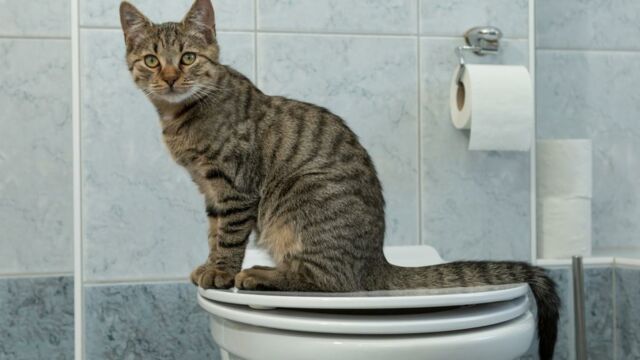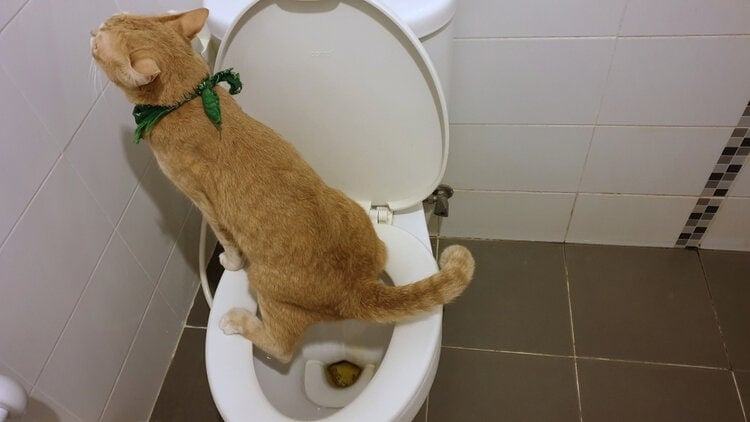Which Flushing Animal Waste Down the Toilet Is Harmful
Which Flushing Animal Waste Down the Toilet Is Harmful
Blog Article
We have come across this article involving 4 Reasons Why Dog Poop Cleanup is Important below on the web and felt it made sense to relate it with you here.

When it pertains to taking care of waste, specifically animal waste, many people often turn to the convenient choice of flushing it down the commode. However, this relatively very easy remedy can have serious repercussions for the atmosphere and public health. In this write-up, we'll discover why flushing animal waste down the toilet is a bad idea and offer alternate techniques for proper disposal.
Introduction
Proper garbage disposal is crucial for maintaining environmental sustainability and public health. While it might appear safe to flush animal waste down the toilet, it can bring about numerous problems, both for the atmosphere and human well-being.
Threats of flushing pet waste
Ecological effect
Flushing pet waste introduces harmful microorganisms and microorganisms into rivers, which can negatively influence marine communities. These virus can contaminate water sources and injury aquatic life, disrupting delicate ecological communities.
Public health concerns
Animal waste consists of unsafe germs such as E. coli and Salmonella, which can present significant health risks to humans. Flushing animal waste down the toilet can contaminate water supplies, resulting in the spread of diseases and infections.
Alternatives to flushing
Instead of purging animal waste down the toilet, there are several alternative disposal approaches that are more eco-friendly and hygienic.
Composting
Composting animal waste is a green way to dispose of it. By composting, raw material is broken down right into nutrient-rich dirt, which can be made use of to feed yards and plants.
Land fill disposal
Getting rid of animal waste in a landfill is an additional choice. While not as environmentally friendly as composting, it is a safer choice to flushing, as it avoids the contamination of water resources.
Family pet waste disposal systems
There are customized pet garbage disposal systems offered that securely and hygienically throw away animal waste. These systems typically make use of enzymes to break down waste and eliminate smells.
Actions to proper animal garbage disposal
To make certain proper disposal of animal waste, comply with these actions:
Scooping and getting waste
Routinely scoop and bag animal waste utilizing eco-friendly bags. This protects against waste from contaminating the environment.
Using designated waste containers
Dispose of bagged pet waste in marked waste containers, such as garden compost bins or landfill bins. Avoid flushing it down the toilet at all prices.
Cleaning up can and family pet areas regularly
Regularly tidy litter boxes and pet dog areas to prevent the build-up of waste and bacteria. Usage pet-safe cleaning products to keep hygiene.
Advantages of proper disposal approaches
Adopting correct disposal methods for pet waste supplies a number of advantages:
Reduced environmental pollution
Appropriate disposal techniques minimize the risk of environmental pollution, securing rivers and ecosystems from contamination
Minimized danger of water contamination.
By avoiding flushing animal waste down the toilet, the threat of water contamination is substantially minimized, safeguarding public health.
Enhanced cleanliness and health
Correct disposal approaches promote better sanitation and health, developing a more secure setting for both human beings and pets.
Verdict
Finally, flushing animal waste down the toilet is hazardous to the environment and public health. By taking on alternative here disposal approaches and adhering to appropriate waste management techniques, we can lessen the unfavorable influence of pet waste and contribute to a cleaner, much healthier world.
What To Do With Dog Poo – The Do's And Don'ts Of Disposing Of Faeces
Dog poo bins
Some councils provide dedicated dog waste bins in popular dog-walking areas that can take dog poo that has been bagged but you can legally dispose of dog waste in any public litter bin, as long as it is securely bagged. This also applies to your wheelie bin at home.
Do not flush
Water companies do not recommend flushing dog faeces down the toilet because certain parasites can survive the water processing treatment and are potentially harmful to humans. You should also never consider flushing dog poo that has been bagged down the toilet as the bags will not break down and instead create severe blockages in the sewage system.
In the woods
The Forestry Commission promotes a ‘stick and flick’ method for dealing with waste in the woods. This means finding a stick and using it to flick any poo from off the path so that it is out of the way of other walkers. You could also bury it as long as it is not in an area where there might be livestock.
Livestock
Parasites found in dog poo can be transmitted to livestock if they inadvertently eat infected faeces that has been left on grazing land. This could result in the death of sheep or abortion in cattle so you should always make sure you pick up your dog’s waste in fields where livestock could be present.

Regularly tidy litter boxes and pet dog areas to prevent the build-up of waste and bacteria. Usage pet-safe cleaning products to keep hygiene.
Advantages of proper disposal approaches
Adopting correct disposal methods for pet waste supplies a number of advantages:
Reduced environmental pollution
Appropriate disposal techniques minimize the risk of environmental pollution, securing rivers and ecosystems from contamination
Minimized danger of water contamination.
By avoiding flushing animal waste down the toilet, the threat of water contamination is substantially minimized, safeguarding public health.
Enhanced cleanliness and health
Correct disposal approaches promote better sanitation and health, developing a more secure setting for both human beings and pets.
Verdict
Finally, flushing animal waste down the toilet is hazardous to the environment and public health. By taking on alternative here disposal approaches and adhering to appropriate waste management techniques, we can lessen the unfavorable influence of pet waste and contribute to a cleaner, much healthier world.
What To Do With Dog Poo – The Do's And Don'ts Of Disposing Of Faeces
Dog poo bins
Some councils provide dedicated dog waste bins in popular dog-walking areas that can take dog poo that has been bagged but you can legally dispose of dog waste in any public litter bin, as long as it is securely bagged. This also applies to your wheelie bin at home.
Do not flush
Water companies do not recommend flushing dog faeces down the toilet because certain parasites can survive the water processing treatment and are potentially harmful to humans. You should also never consider flushing dog poo that has been bagged down the toilet as the bags will not break down and instead create severe blockages in the sewage system.
In the woods
The Forestry Commission promotes a ‘stick and flick’ method for dealing with waste in the woods. This means finding a stick and using it to flick any poo from off the path so that it is out of the way of other walkers. You could also bury it as long as it is not in an area where there might be livestock.
Livestock
Parasites found in dog poo can be transmitted to livestock if they inadvertently eat infected faeces that has been left on grazing land. This could result in the death of sheep or abortion in cattle so you should always make sure you pick up your dog’s waste in fields where livestock could be present.

I ran across that piece on 4 Reasons Why Dog Poop Cleanup is Important while doing a lookup on the web. Sharing is caring. You never know, you may very well be doing someone a favor. We recognize the value of your readership.
Click Here Report this page